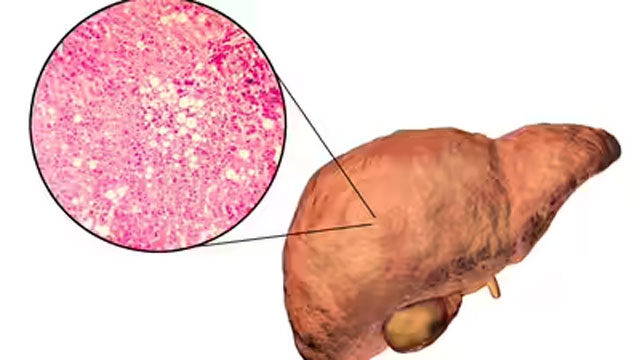Daijiworld Media Network - Mumbai
Mumbai, Oct 23: Fatty liver disease has quietly become a widespread public health concern, affecting an estimated 38% of adults, according to a systematic review in the Journal of Hepatology. Commonly perceived as mere fat accumulation in the liver, experts now suggest the issue is far more complex, involving underlying nutrient imbalances and metabolic stressors.
Dr. Robert DeBease, a functional medicine specialist, emphasizes that fatty liver disease is closely linked to deficiencies in copper, vitamin A, and even fructose from fruit. These “hidden triggers” play a crucial role in the liver’s ability to process iron effectively. Without adequate copper and vitamin A, iron becomes trapped in the liver, damaging cells and leading to fat accumulation. Dr. DeBease likens this to a truckload stuck in a warehouse, causing a backlog that harms liver function.

Fructose, the sugar naturally present in fruit, adds another layer of stress. Since the liver metabolizes fructose, excessive intake can overload the organ, especially if copper and vitamin A levels are already low. Over time, this contributes to liver cell damage and perpetuates fatty liver disease.
Nutritional Strategy for Liver Health
Dr. DeBease advocates for a dietary approach that goes beyond simple fat reduction:
1. Eliminate all fruits to reduce fructose load.
2. Reduce overall carbohydrate consumption.
3. Prioritize quality proteins and healthy fats.
4. Include nutrient-rich organ meats, such as liver, to replenish essential nutrients.
He highlights foods naturally high in copper and vitamin A, including carrots, sweet potatoes, kale, eggs, and pumpkin, which support the liver’s iron-shuttling function and promote cellular repair.
The Liver-Adrenal Connection
The liver also plays a critical role in managing stress through its interaction with the adrenal glands and cortisol regulation. A compromised liver can overburden the adrenal system, exacerbating stress-related health issues. By restoring liver health, the body can better regulate hormones and support overall resilience.
Dr. DeBease’s approach encourages a shift in perspective: fatty liver disease is not just about fat accumulation but about restoring nutritional balance, reducing metabolic stress, and supporting natural repair mechanisms. By addressing underlying deficiencies and moderating fructose and carbohydrates, the liver can recover, leading to improved health and overall bodily function.
For anyone managing fatty liver, the focus should be on nourishing the body with the right nutrients, supporting iron metabolism, and allowing the liver to repair itself—moving beyond conventional diet tips to a more holistic, nutrient-based approach.